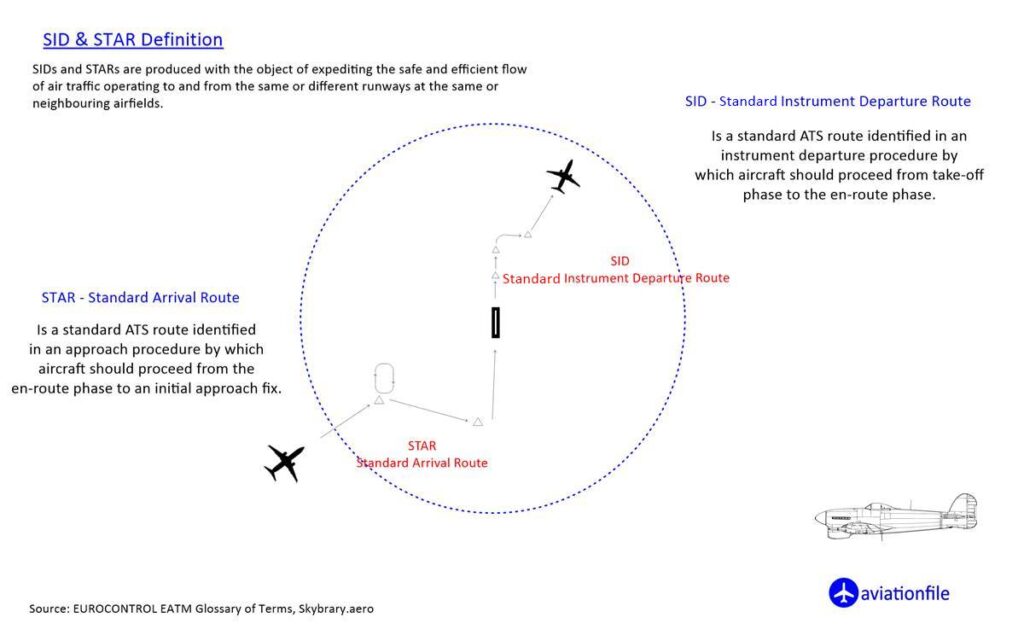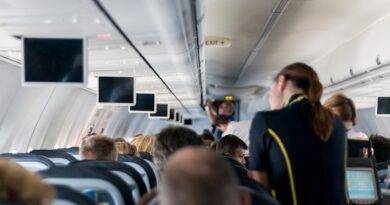Standard Arrival Route (STAR)
A Standard Arrival Route (STAR) is a pre-defined flight path that aircraft follow upon approaching an airport. The purpose of a STAR is to streamline the arrival process, improve safety, and increase efficiency in air traffic management. STARs are designed to guide aircraft from their cruising altitude to the initial approach fix. And they provide transition to the instrument landing system (ILS) or visual approach.

Some examples of STARs in aviation include:
RNAV (GPS) STAR: This type of STAR utilizes GPS navigation and provides a more direct and flexible route compared to traditional, ground-based navigation systems.
Conventional STAR: This type of STAR uses ground-based navigation aids such as VOR or NDB to guide aircraft to the airport.
Published STAR: Flight charts guide pilots to pre-defined routes, making them readily available for flight planning.
Unpublished STAR: An ad-hoc route created on-the-fly by air traffic control to manage traffic flow during periods of high traffic demand or other operational constraints.
STARs offer a multitude of benefits:
- Safety: They streamline air traffic flow, reducing the risk of mid-air collisions.
- Efficiency: Predictable routes save time and fuel for airlines and passengers.
- Noise reduction: Optimized descent profiles minimize noise exposure near airports.
These are some common types of Standard Arrival Route. And the specific routes and procedures may vary based on the airport and the aviation authority.


